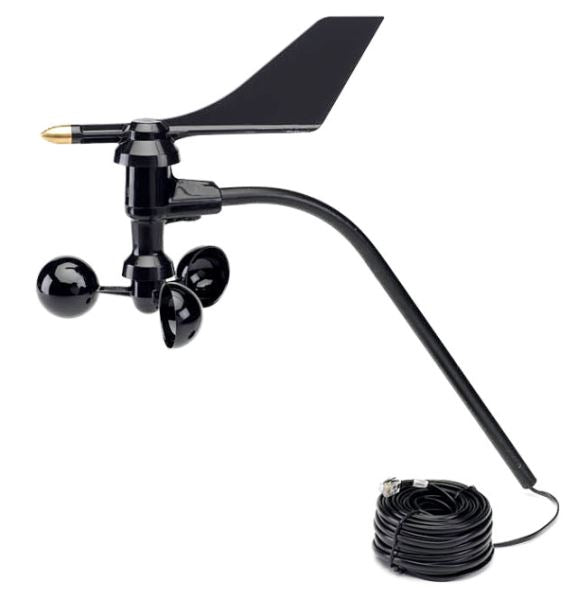Leading Features to Look for in a Reliable Anemometer for Accurate Wind Measurement
Leading Features to Look for in a Reliable Anemometer for Accurate Wind Measurement
Blog Article
Anemometers Revealed: Comprehending Their Importance in Environmental Monitoring and Safety And Security Actions
The duty of anemometers in environmental monitoring and safety and security steps is often undervalued, yet their importance is undeniable. From weather forecasting to aviation safety and security, anemometers play an important function in offering exact data that notifies decision-making procedures and boosts total security.
Background of Anemometers
The evolution of anemometers can be mapped back to the ancient civilizations where primary wind measuring gadgets were initial utilized. These very early wind dimension tools laid the foundation for the growth of extra advanced anemometers with time. One of the earliest recognized anemometers was the hemispherical mug anemometer invented by Leon Battista Alberti in the 15th century. This style contained four hemispherical cups that gathered wind power, providing a dimension of its strength based upon the speed of rotation.
Over the years, improvements in technology led to the growth of even more contemporary anemometers, including ultrasonic anemometers and laser Doppler anemometers, offering increased accuracy and efficiency in gauging wind rate and direction. The history of anemometers showcases an exceptional journey of advancement and development in the field of weather forecasting.
Sorts Of Anemometers
Throughout the area of weather forecasting, different types of anemometers have been established to precisely measure wind rate and direction. Sonic anemometers make use of ultrasonic signals to measure wind speed and instructions precisely. Hot-wire anemometers operate based on the principle that the cooling impact of wind on a heated cable is proportional to the wind rate.
Applications in Meteorology
Having discussed the various sorts of anemometers made use of in weather forecasting for gauging wind rate and direction, it is important to explore their practical applications in the field. Anemometers play an essential duty in weather forecasting by giving real-time and exact information on wind problems (anemometer). Meteorologists make use of anemometers to keep an eye on wind speed and instructions to forecast weather condition patterns, problem warnings for severe climate occasions like cyclones, tornados, and twisters, and examine atmospheric conditions for aviation safety
In weather forecasting, anemometers help in recognizing regional and regional wind patterns, which are crucial for anticipating weather condition modifications and identifying weather patterns. These tools are likewise used in research to research microclimates, metropolitan warm islands, and air pollution diffusion. Furthermore, anemometers are employed in farming to maximize crop monitoring methods, such as irrigation and chemical application, based on wind conditions.
Relevance in Air Travel Safety
An integral aspect of guaranteeing air travel safety hinges on the thorough his comment is here tracking of wind problems utilizing anemometers. Anemometers play an important role in air travel by providing real-time information on wind speed and instructions, assisting pilots in making notified choices during landing, trip, and take-off. Strong and unpredictable winds can considerably influence aircraft operations, making it essential for air travel authorities to rely upon accurate wind measurements to make sure the safety of travelers and staff.

In the vibrant atmosphere of air travel, where also minor adjustments in wind rate and instructions can have profound impacts, anemometers stand as important devices for advertising safe and secure flight.
Duty in Environmental Study
How do anemometers contribute to advancements in environmental research study? Anemometers play a crucial function in ecological study by offering necessary data on wind speed and direction. This details is vital for comprehending numerous atmospheric procedures, such as air pollution dispersion, weather condition patterns, and environment adjustment. By properly measuring wind attributes, anemometers aid scientists analyze the movement of toxins in the air, evaluate the effect of commercial discharges, and forecast use this link the spread of impurities in the atmosphere.
:max_bytes(150000):strip_icc()/GettyImages-186864034-58e3355e5f9b58ef7e576b44.jpg)

Conclusion
Finally, anemometers have played a crucial function in look at more info environmental tracking and safety procedures. With a rich history and numerous types offered, these tools have been widely utilized in meteorology, air travel safety and security, and environmental research study. Comprehending the importance of anemometers is essential for properly measuring wind speed and instructions, which is essential for predicting climate patterns, making certain secure aviation procedures, and performing environmental studies - anemometer. Their payments to these fields can not be ignored.
One of the earliest known anemometers was the hemispherical mug anemometer developed by Leon Battista Alberti in the 15th century. Over the years, innovations in technology led to the advancement of even more modern anemometers, consisting of ultrasonic anemometers and laser Doppler anemometers, providing boosted accuracy and efficiency in determining wind rate and direction. Hot-wire anemometers operate based on the concept that the cooling result of wind on a warmed wire is symmetrical to the wind speed. Meteorologists use anemometers to monitor wind rate and instructions to forecast weather patterns, issue cautions for serious weather occasions like storms, tornados, and tornadoes, and analyze climatic problems for aeronautics safety and security.
Recognizing the relevance of anemometers is important for properly gauging wind speed and direction, which is important for anticipating climate patterns, guaranteeing safe aviation procedures, and carrying out environmental studies. (anemometer)
Report this page